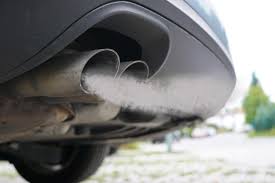The 2ZR-FE And 2ZR-FAE 190PS Mark!👈
Make The Most Out Of A 2ZR NA
A 2ZR-FE EngineShop At Sites Such as MonkeyWrenchRacing, Wiseco, CP Pistons, or JE Pistons, For Builds!
Hit The 190PS Mark!
This IS Fitted For Cars For Under 2900LBS!
Do Weight Reduction! 👈
Mod The Transmission and Car!
NA Emissioned Free For Most States!
Get Better And Approved Performance Tires!
Get 4A-GE Power With Premium Fuel!
Be The Perfect Driver! HIGH 14 Second Or Lower NA Car!
The 1.8L i4 Toyota 2ZR-FE/2ZR-FAE used in vehicles such as the Corolla and Matrix, is known for its balance of reliability and efficiency. While it's often seen as a commuter engine, enthusiasts have found ways to extract more performance from it, especially in naturally aspirated form. The challenge, however, lies in improving power without sacrificing emissions compliance, particularly in regions with strict environmental regulations. An emissions-friendly NA build can provide a rewarding driving experience while staying within legal bounds.
A 2ZR-FE Cylinder Head
The foundation of any performance build begins with airflow. Improving intake and exhaust flow can significantly increase the engine's breathing efficiency. A CARB-approved cold air intake allows cooler, denser air into the combustion chamber, boosting power slightly. Paired with a CARB-legal performance header and a high-flow cat-back exhaust, these modifications can add around 10–15 horsepower to the crank while keeping the factory catalytic converter and O2 sensors intact. These bolt-ons not only enhance performance but also maintain full emissions system functionality.
To maximize the benefits of these breathing modifications, custom ECU tuning is essential. With the help of tuning platforms like EcuTek or ECUMaster, tuners can adjust parameters such as ignition timing, air-fuel ratios, and VVT-i settings. A proper tune can yield an additional 10–15 horsepower, making the engine more responsive and efficient. Importantly, when tuned conservatively with emissions readiness in mind, these adjustments can retain full OBD-II compliance and pass emissions tests, even in strict states like California.
For builders seeking even more power without going forced induction, upgrading the camshafts offers a viable path. Mild performance camshafts, designed to work with stock valvetrain components, can increase valve lift and duration, resulting in better top-end power. These cams, when paired with a well-optimized tune and stock catalytic system, can add another 10–15 horsepower. They are designed to retain a smooth idle and avoid triggering emissions-related trouble codes, making them ideal for street builds that need to stay emissions-friendly.
Additional performance can be unlocked with minor supporting modifications. A lightweight flywheel and underdrive pulleys reduce rotational mass, helping the engine rev more freely and respond faster to throttle input, though they don't increase peak horsepower. Optional cylinder head work, like mild porting and a thinner head gasket, can improve combustion efficiency and compression slightly, further complementing camshaft and airflow upgrades. These refinements, while subtle, contribute to a well-rounded and legal build.
In total, a carefully planned emissions-friendly NA build on the 2ZR-FE can realistically achieve between 170 and 190 horsepower at the crank, which translates to around 145–165 horsepower at the wheels. This level of performance offers a significant improvement over stock without compromising reliability or legality. By selecting CARB-approved parts and tuning responsibly, enthusiasts can enjoy the benefits of a sportier engine while remaining compliant with emissions regulations, a practical and satisfying path for the everyday performance-minded driver.






Comments
Post a Comment